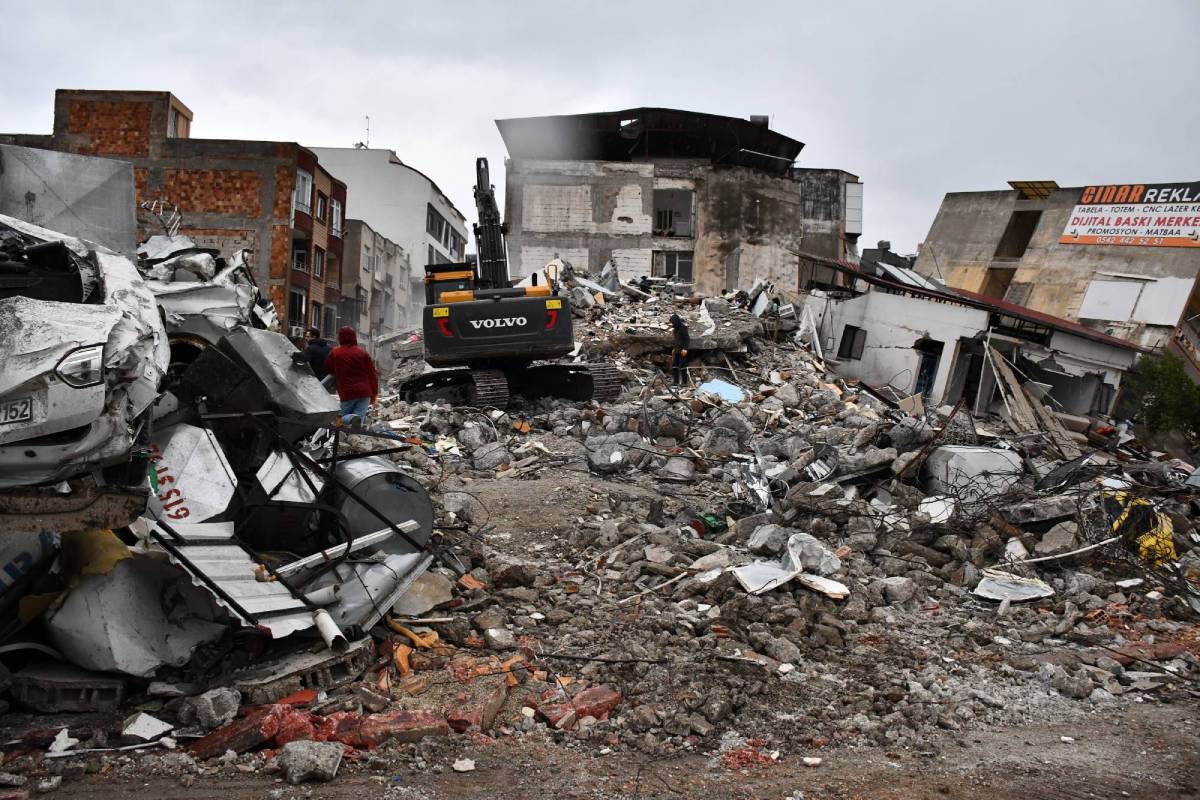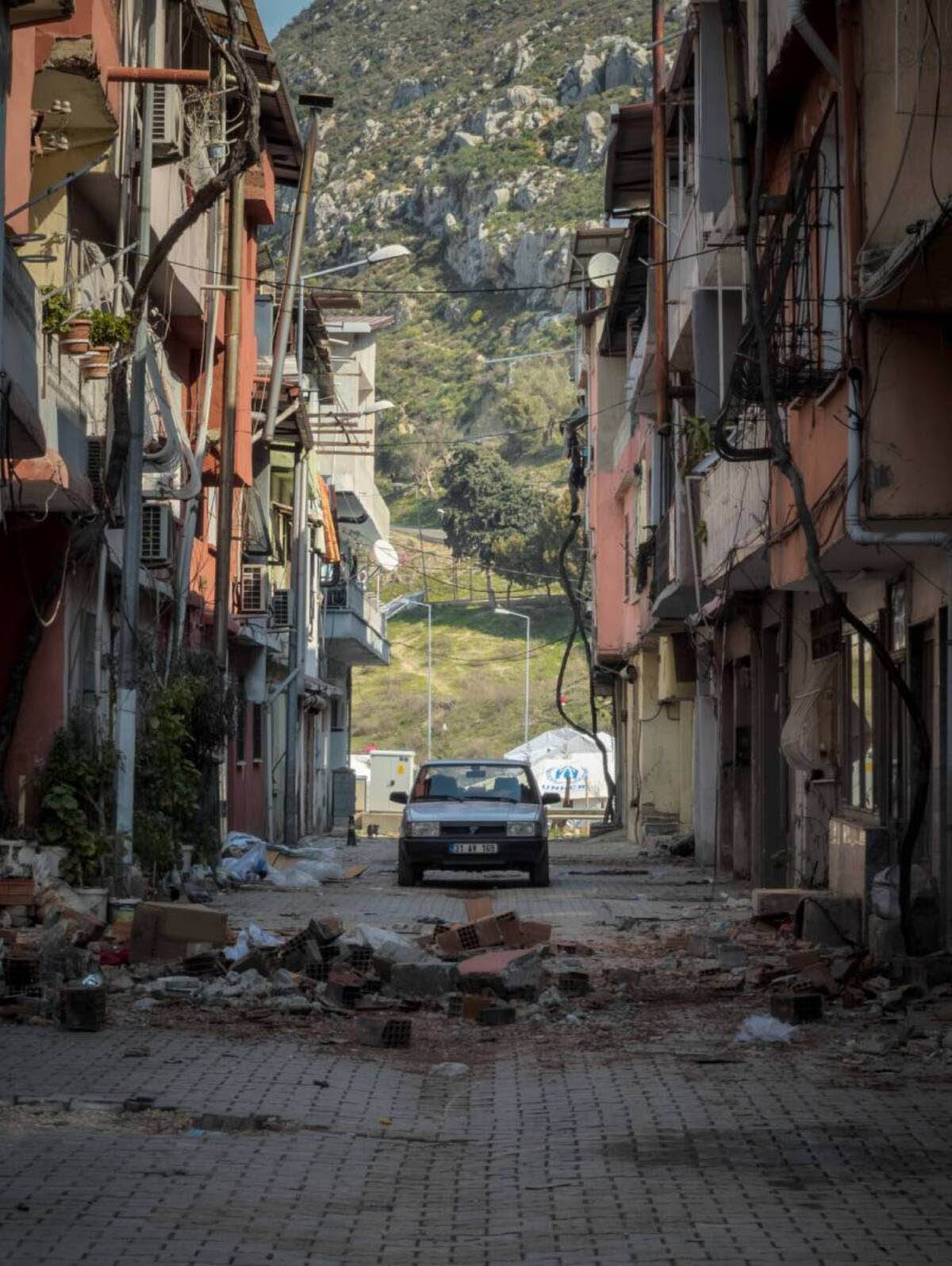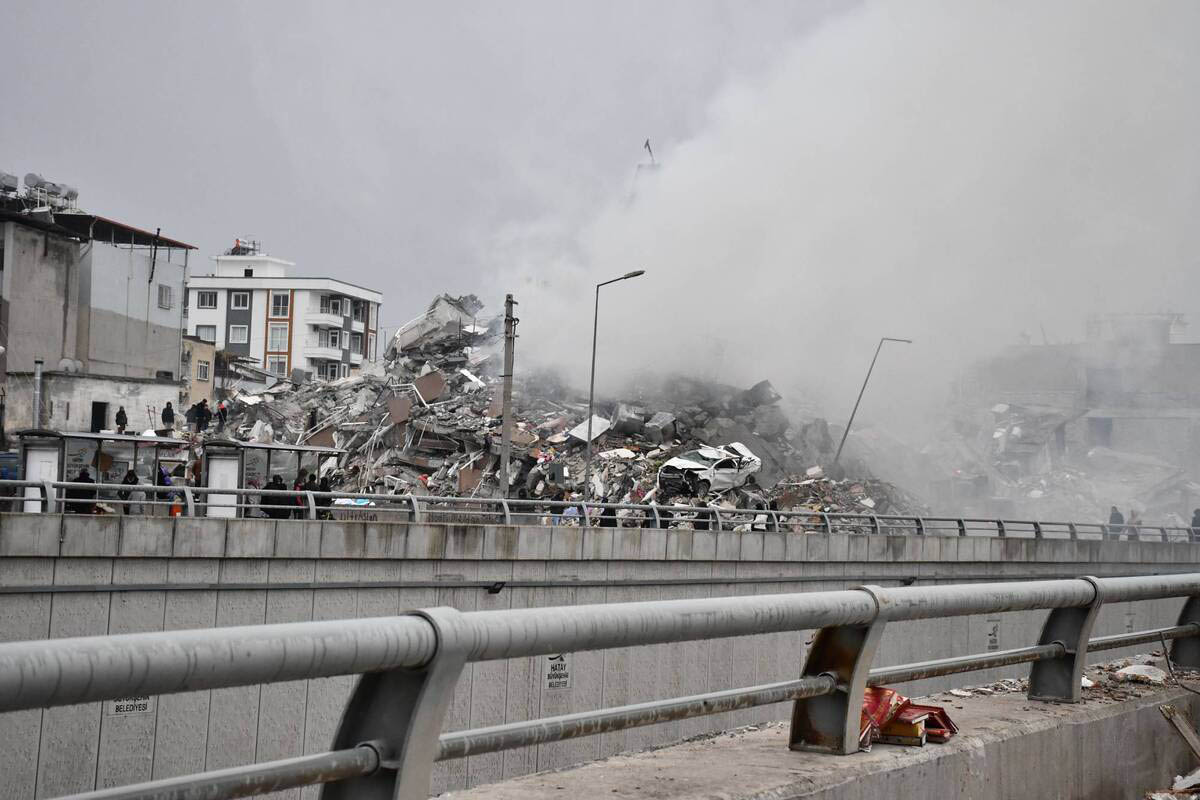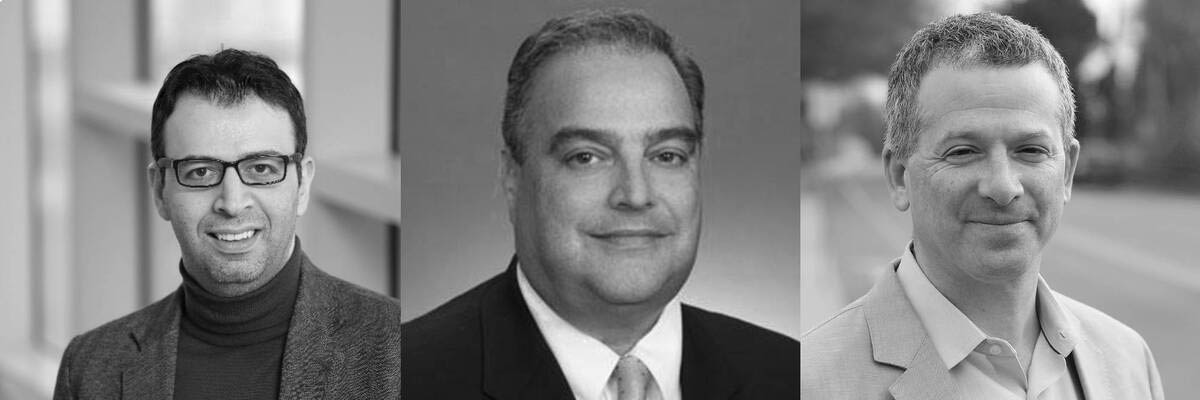Submitted by Mert Kansu
Lessons From Turkey-Syria Earthquake & Rebuilding For A Resilient Future
United States Architecture News - Mar 20, 2023 - 18:21 6896 views

As the combined death toll climbs above 50,000, over a month after the devastating earthquake, the pain and sorrow in the affected communities are still fresh. The world has responded quickly to send assistance, including medical and technical supplies and daily necessities for the victims. However, the magnitude, and the infrastructural and organizational complications in the hours and days following the event, have caused the disaster to be one of the deadliest earthquakes ever recorded.
As a Turkish national, and an architect, living in and reporting for the US in World Architecture Community, WAC US Country Reporter, Mert Kansu has been involved in tracking and providing support in the efforts to assist Turkey and Syria since day one. Since then, he contacted and talked with humanitarian and other non-profit organizations and interviewed researchers and academics. This was to get a better grasp of if there was a sufficient and organized response, and more importantly to understand the underlying reasons for such a devastating amount of life loss, and ways for rebuilding for a resilient and sustainable future in our communities.
Following the events, numerous international non-profit organizations such as Doctors Without Borders, UNICEF, Red Cross/Red Crescent, Bridge to Türkiye Fund, Turkish Philanthropy Funds, and locals such as AFAD1, AKUT, and AHBAP have declared that they were directing their efforts and donations for earthquake relief in the affected regions. Many US organizations such as the American Institute of Architects, Archeological Institute of America, and American Society of Civil Engineers made statements to stand in solidarity with the people of Turkey and Syria, and have directed their members on how to provide support via donations.
The Turkish Consulates and Embassy in the US declared that they would be accepting listed donations via mail or in person. Being one of the people who donated in person, Mert had the chance to see the collaboration and the support of the local Turkish and American communities there. The Embassy doors were open with cars lining Embassy Row in Washington D.C., patiently waiting to drop off their donations. Inside the courtyard, the embassy workers and volunteers were tirelessly working on packing, carrying, and organizing boxes to be sent over to the airport for their journey to Turkey.
As the initial relief efforts have concluded and the assistance personnel made their way into the affected regions in the days and weeks following the event, I’ve aimed to get insight from academics and researchers from the University of Virginia, in my town. Osman E. Ozbulut, Associate Professor of Civil Engineering in the Department of Engineering Systems and Environment, provided his expertise and thoughts from an engineering perspective, and also being a Turkish national. Richard C. Schragger and Brian Vella have enlightened important topics as legal professionals and academics at the Law School.
"The most common cases we see in the construction law world arise from...adverse subsurface conditions, design defects, poor coordination of the work or changes to the work that cause the construction to take more time and cost more money to complete than originally agreed."
When asked for reasons for the immense livelihood and financial loss and destruction the earthquake has caused, Prof. Vella has given some experience from a US perspective and gave context to common issues troubling current governments regarding earthquake preparedness: "The most common cases we see in the construction law world arise from causes that have existed for as long as there have been construction projects, including adverse subsurface conditions, design defects, poor coordination of the work or changes to the work that cause the construction to take more time and cost more money to complete than originally agreed. The traditional design-bid-build project delivery system often caused designers, owners, and contractors to push for contract terms that protected their respective interests and treated the other project participants as adversaries, leading to disputes and litigation. In recent years, more collaborative project delivery systems have enjoyed greater use, such as “design-build” or “integrated project delivery” systems. These approaches strive to make the project participants partners in the overall success of a project rather than adversaries. It is expected that these project delivery systems will continue to evolve and to gain popularity.”
"Our political and legal culture generally favors landowners"
Prof. Schragger added to this by saying: “Over-development, especially in growing sunbelt states, is still an issue—especially in flood plains or along the coasts. Efforts to mitigate environmental damage through regulation have sometimes run up against judicial decisions that limit the ability of states to constrain development in risky areas. Our political and legal culture generally favors landowners and for various reasons encourages sprawling exurban development. Recent fires in the West have illustrated the vulnerability of development fire-prone areas; the entire West is subject to serious water supply issues, but thus far, land use has not been particularly responsive. Because we have a federal system with 50 states—each making their own land use law—it is difficult to develop a coordinated response to these issues.”
 Photo by Chandler Cruttenden via Unsplash
Photo by Chandler Cruttenden via Unsplash
"Many non-ductile concrete buildings have collapsed"
Prof. Ozbulut has taken the question towards Turkey and the earthquake and explained: “One class of buildings that performed poorly and mostly collapsed during Turkey earthquakes are non-ductile reinforced concrete buildings. These buildings are mostly old buildings where the design codes were not requiring sufficient detailing/steel reinforcement to resist lateral loads. The damage in non-ductile concrete buildings occurs suddenly and at undesired locations such as column ends, leading to the collapse of the columns of individual stories and the overall building as a ‘pancake’. During many past earthquakes around the world, many non-ductile concrete buildings have collapsed. There has been extensive research on this topic and there are a variety of methods ranging from more traditional methods such as the use of steel jackets, and concrete shear walls to the use of FRP jackets, steel braces, or energy-dissipating devices. In California, in several counties, the local governments require the owners to retrofit such buildings within a given time frame. But such buildings exist in many earthquake-prone regions of the world and require immediate attention.
"Another class of building is ‘soft story’ buildings. A soft story refers to the existence of a story level, commonly the first floor, with considerably lower lateral stiffness and strength than the other stories in a multi-story building. The strengthening techniques mentioned above can be used for this purpose as well. This soft-story failure can be observed in newer buildings - if not designed properly. The first story of residential buildings is commonly used as a garage, office space, or some other purpose and has different characteristics (such as increased story height) than other floors. If that story is not designed adequately, it will collapse while the rest of the stories sit on the ground. Building stock in many cities near seismically active zones around the world includes buildings, such as non-ductile concrete buildings, designed with outdated design codes. Thousands of buildings collapsed during Turkey earthquake sequences emphasizes the urgent need for retrofit mandates for old buildings or those with design deficiencies."
When asked on the topic of creating safer and more resilient communities for future generations, roles of construction, land use laws, and civil engineering, and how they can be leveraged, Prof. Schragger gave me the context of land use law’s role and the mechanisms, or lack thereof, within to create resilient communities: “Property—and land use law specifically—can be used to designate the appropriate locations of structures in a community to ensure that risks of natural disasters or environmental degradation can be managed, reduced, or eliminated. Building codes can be used to ensure minimum standards for materials and construction….There have been efforts to reduce construction in flood plains or in areas subject to a heightened risk of fire, though generally zoning and planning laws have been more preoccupied with the placement of different types of uses and have traditionally been less preoccupied with risk prevention along these other dimensions. We have come to realize, however, that climate change is radically increasing the risk and scope of natural disasters, fires, and floods, and so more attention is starting to be paid to planning for resilience."
"Contractors must use competent building materials and sound construction practices to deliver a structure that will perform as intended by the designer"
Prof. Ozbulut’s response was twofold: “First, I don’t think that there is a good understanding of seismic risks and seismic performance of code-confirming buildings in people. A survey conducted by (The United States Geological Survey) USGS study in 2018 revealed that almost 60% of 800 people who were surveyed think that their building will be occupiable/habitable after a strong earthquake. Modern seismic design codes intend building components to be damaged in a controlled manner during an earthquake such that the building will still stand after the quake and protect occupants. This performance objective is called ‘life safety’ and have deemed to be sufficient until recently. However, Christchurch earthquake sequences, two major shakings occurred in December 2010 and February 2011 in Christchurch, New Zealand, revealed the limitations of modern seismic codes and ‘life safety’ design performance goal as the damage to the buildings designed with modern code was so extensive that thousands of such buildings had to be demolished after the quake.
"Functional recovery aims to prevent damage and enables re-occupancy"
"The earthquake engineering community quickly realized this deficiency in the design philosophy of modern codes. There has been significant research on the development of new design strategies such as performance-based design and new technologies over the past decade. The Building Seismic Safety Council (BSSC) under the National Institute of Building Council is currently leading the initiatives to update the design provisions and codes such that they incorporate ‘functional recovery’ as a performance objective. ‘Functional recovery’ is defined as a performance objective where buildings are not only designed and constructed for life safety but also to prevent damage and enable re-occupancy within an acceptable period. Christchurch earthquake sequences alarmed the engineers regarding the acceptable performance of modern buildings. Turkey earthquake sequences are a serious alarm for the people and developers to re-think about the acceptable risks during an earthquake."
"The second issue is that the technologies that will enable a higher performance level are not commonly considered in the construction as the developers prefer to satisfy just the “code-minimum” requirements to keep the costs lower – unless there is a demand for more resilient design. We already have advanced technologies to design buildings to let life continues with some normalcy. The additional cost of such seismic protection technologies, which typically varies from 1-5% of initial construction costs, is little compared to the cost of the social and economic disruptions caused by a major earthquake."
"Here are the things that can/should be done to promote such technologies: update the design provisions and codes for functional recovery; communicate risks of conventional design and the economic and social benefits of enhanced design with building owners and the public through mass media and state or federal policies; offer financial incentives such as reduced insurance premiums and low-interest loans; provide tax benefits for retrofitting or implementing resilient designs; and create value for seismic safety in the property market so that investors can see a return. The impacts of climate change that we all are feeling today caused policymakers to realize the importance of greener policies. The building and construction industry, especially in developed countries, is now taking action to decarbonize the built environment. We now need wider public awareness of the seismic risks of their buildings and public support that will bring policy changes towards designing a more resilient built environment."

Photo by Çağlar Oskay via Unsplash
Looking forward in terms of public awareness on building insurance, construction laws, decision-making, and upcoming engineering solutions to curb damage in cases of disasters, Prof. Schragger has commented: “It is sometimes difficult for the general public to understand which level of government or which actor is responsible for planning, site selection, construction oversight, and enforcing building codes. Local governments in the US generally have decent systems to ensure that builders comply with relevant codes—those codes are generally a mix of local and state law. But the public has little understanding of how development decisions are made and who makes them, in part because what to build and where is a highly decentralized decision-making process, involving landowners, investors, consumers, and multiple governments. Coordinating all those relevant actors to make certain that structures are built safely and in safe locations is extremely complex.”
“One important lesson from Turkey earthquake sequences is the fact seismic protection technologies can avoid not only collapse but also damage...This is not an unexpected outcome for engineers, but people in Turkey are now asking why more buildings have not utilized such smarter engineering technologies"
Seismic isolation systems, the technology that let hospitals survive after Turkey's earthquakes without damage, minimize the effects of earthquakes by preventing the transmission of seismic energy into the buildings in the first place. This is achieved through the installation of seismic isolator devices, commonly either elastomeric or sliding bearings, between the foundation and building superstructure. Other seismic protection technologies that allow the ‘functional recovery’ of buildings include seismic dampers such as fluid viscous dampers, friction dampers, and buckling restrained braces. The seismic dampers are particularly appealing for tall buildings that cannot be efficiently base-isolated. Seismic dampers are installed along the height of the structure such that they absorb earthquake energy and limit vibrations and damage. Both seismic isolation systems and seismic dampers can be used for new designs and retrofits while retrofitting is easier with the latter. All these systems are commercially available and are being used in some buildings all around the world. They have been used in Christchurch heavily while the city was rebuilt. As long as the owners feel the need, the technology is there for implementation. We are also working on developing new dampers and isolation systems that employ “smart alloys” to further improve the performance of such systems. One unique aspect of our smart technologies is that they have ‘self-centering’ capabilities, which are critical for the re-occupancy of buildings after the vent. They are reusable – that is they will be ready to resist an aftershock or future earthquake without the need for any repair. As we see again and again, strong earthquakes not only damage the infrastructure but also the lives of many people as well as economies. Investing initially in the resilient building will save lives and communities and avoid significant economic losses."
Trying to distill these discussions I’ve made with Prof.Ozbulut, Vella, and Schragger, I’ve understood better that issues of curbing life and financial loss, providing resilient structures for communities, and appropriately regulating and inspecting them is a multifaceted, and dynamic problem. While these discussions have not provided a single, easy answer to the problem, they made me understand that such a wicked problem needs a multidisciplinary and multileveled approach that will take an open mind and diligence from all parts of the decision-making mechanism.

Left to right: Osman Ozbulut (Photo by University of Virginia Office of Communications2), Brian Vella (Photo by Haynes Boone), Richard Schragger (Photo by Julia Davis)
Osman Ozbulut is an Associate Professor of Civil Engineering in the Department of Engineering Systems and Environment at the University of Virginia. His research focuses on applying innovative materials, sensing technologies, and interdisciplinary expertise to the development of resilient and sustainable civil infrastructure systems.
Brian Vella teaches Construction Law at the University of Virginia Law School and is a partner in Haynes Boone law firm. In addition to representing parties in litigation, arbitration, and mediation, Vella counsels clients regarding contract formation and interpretation issues and develops strategies for risk analysis and avoidance.
Rich Schragger joined the University of Virginia faculty in 2001 and was named the Walter L. Brown Professor in 2022. He was previously the Perre Bowen Professor, a chair he held starting in 2013. Schragger’s scholarship focuses on the intersection of constitutional law and local government law, federalism, urban policy, and the constitutional and economic status of cities. He also writes about law and religion.
1. AFAD (Ministry of Interior, Disaster and Emergency Management Presidency) (https://en.afad.gov.tr/). Copy-paste the link into your browser.
2. University of Virginia Office of Communications (https://communications.virginia.edu/). Copy-paste the link into your browser.
Top image: Photo by Çağlar Oskay via Unsplash.
